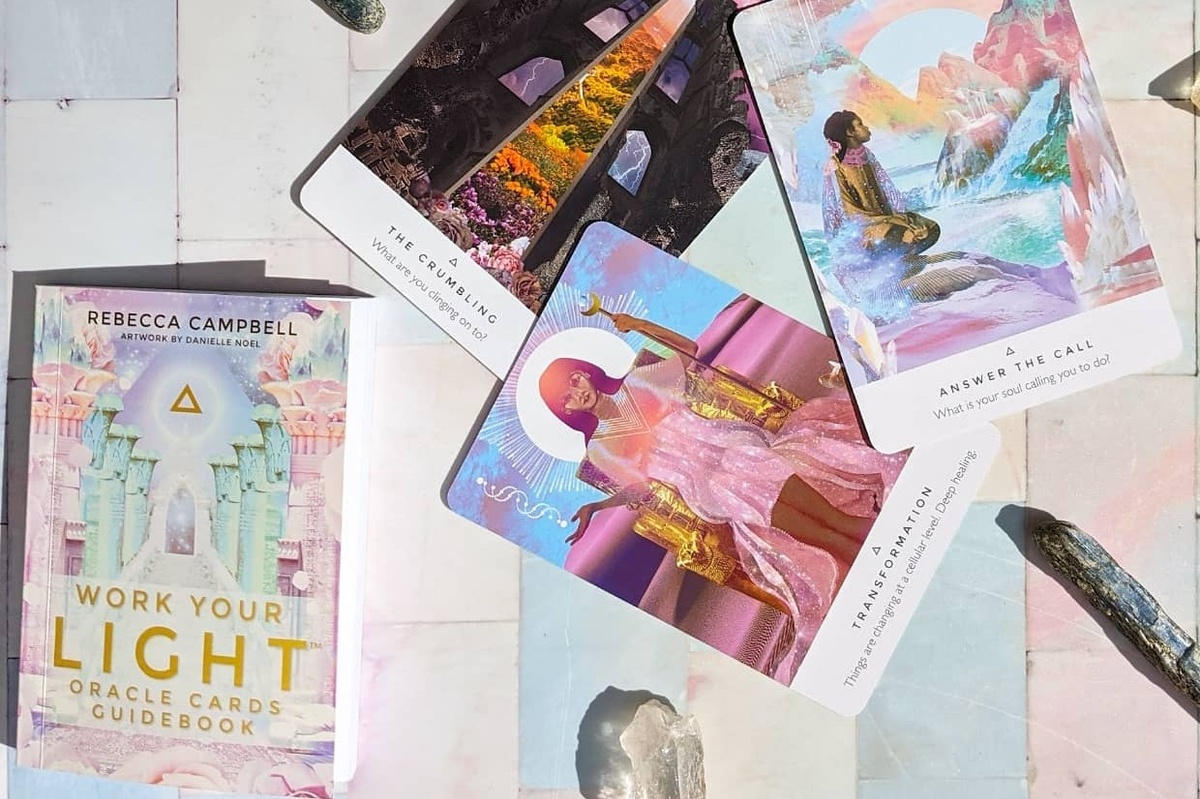What’s the Differences Between Oracle and Tarot Cards?
Updated by Katie King
At a first glance, Tarot and oracle cards can appear very similar. Adorned with beautifully and ornately decorated collections of images, they are designed to be pulled with intention as you seek affirmation and guidance. Although many people associated pulling cards with psychic readings and witchcraft practitioners , you do not have to practice any sort of religion to benefit from pulling cards. With an awareness of how best to use both of these decks, they can help guide you towards greater insight, perspective, and personal growth.

What is a tarot card deck?
Although Tarot cards are gaining in popularity these days, they are actually very old. According to the Met Museum , their original designs are based on an Italian card game from the 1400s. Their use did not turn toward divination, though, until the spiritualism movement in the 19th century, when Europeans began to gravitate toward fortune-telling and the occult.
Although Tarot cards can be designed in a variety of ways and employ different language, decks always contain 78 cards: 22 in the Major Arcana (relating to pivotal events) and the remaining 56 belonging to the Minor Arcana (representing the intricacies of daily life). The Minor Arcana are divided into different suits, which most regularly show up as wands, swords, cups, and pentacles.
Most Tarot decks come with information explaining how to use them and anyone can pull cards to see what comes up. Conducting a full reading —using detailed techniques such as a cross spread—means that you’ll need to first dedicate some time to learning the meaning behind each card and their specific placements in a spread. If you’re new to Tarot, most readers recommend starting with the Rider Waite deck, which is considered to be the foundational archetype that all other decks draw from.

What is an oracle card deck?
Oracle decks first appeared in France in the 19th century, just about the same time that Tarot cards began to take on a newly spiritual meaning. The history of these types of cards are much more understood than with Tarot, as the first oracle deck was designed and developed by a French fortune teller, Madame Lenormand, specifically for divination purposes. Because of their accessibility, for much of the 20th century, oracle decks were actually much more popular than Tarot, although the name may not be as familiar today.
When it comes to their design, structure, and uses, oracle decks are a lot looser in the ways they can be used than Tarot. Because there are few rules—you’re not required to learn how different spreads work and don’t even need to understand how the cards talk to each other!— they’re often better for beginners. Many practitioners will pull one card a day to give themselves guidance and understanding, asking simple but specific questions to set their intentions.
Unlike Tarot, oracle decks do not come with a standard number of cards, often ranging between 36 and 64 in a single set. Similarly, they are not typically divided into suits like Tarot and traditional card decks, although they are numbered for easy guidebook reference.
Which deck is right for you?
Although they are used in different ways, the recent resurgence in popularity of both Tarot and oracle means there are hundreds (if not thousands) of beautiful decks to choose from. Many are designed within a specific theme, such as goddess cards, animals cards, or witchcraft-focused cards.
If you are absolutely new to pulling cards, then an oracle deck may be the easiest place to start. However, with a little practice and a little reading, anyone can master using a Tarot deck as well. If you can’t decide, we recommend trying one of both to see which one feels right to you. After all, this is about honing your own intuition and perspective, so follow where your heart is telling you to go.
















